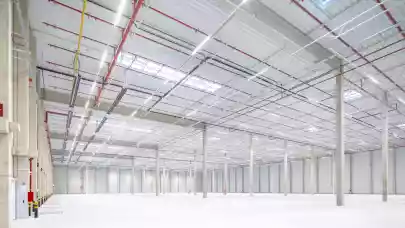
2016 was a strong year for the Romanian commercial property market with a continued boom in the office segment and growing investment volumes. Ilinca Paun, Managing Partner at Colliers International talked us about current trends and expectations for the future.
Ilinca Paun will chair the office panel at SEE Property Forum 2017, co-organised by Property Forum and RICS, in Bucharest on 29 March 2017.
In your opinion which is the number one factor that will influence the Romanian property market in 2017?
2017 is presenting a series of great opportunities for the Romanian real estate market, but especially for office market. Activity of the office has reached a post-crisis maximum and will remain at the forefront of the real estate market. More encouragingly, developments in this segment are closely correlated with the needs of the real economy. Interest for BPO/SSC and IT centres is at an all-time high, which translated directly into increased demand for office spaces.
How has liquidity changed on the investment market during the past year?
2016 maintained comfortable market liquidity, marking a total investment volume of €910 million, up from €820 million in 2015. The market not only saw a boost in the total volume of transactions, but it also registered a qualitative shift during 2016.
The structure of buyers has changed during 2016. While 2014 and 2015 investment volumes were driven primarily by large, sporadic investments, this trend started to reverse in 2016. Furthermore, new investors joined the Romanian market, as was the case with PPF, GIC, Logicor, while others have resumed their acquisitions in Romania: Catinvest, GTC, First Property, Smartown Investments. We expect this qualitative shift to continue in 2017 as well, particularly as some transactions were postponed for this year due to some administrative delays.
Do you except new investors to enter the market in 2017?
We have seen a very strong interest from new investors that are currently prospecting the Romanian market. The underlying storyline for investing in Romania is quite strong: a) yields for the local market are very attractive from a regional perspective, b) the rapid pace of new developments is improving the market liquidity, c) the financing environment is also showing signs of improvement, especially for high-quality projects. Ultimately, I believe all these factors will result in new investors entering the Romanian market.

What kind of firms are the drivers of growth on the Romanian property market? From which sectors are tenants coming from?
The IT and BPO/SSC sectors are the stars of the market. These two sectors resulted in leasing transactions of over 240,000 sqm during 2016, which accounted for approximately 65% of the total transactions on the Bucharest office market. This dynamic was also reflected in the evolution of the secondary cities in Romania: Cluj Napoca, Timisoara and Iasi. These markets are set to remain very active in the upcoming period.
Are the retail and industrial markets ready to cope with changes brought on by the growth of e-commerce?
Romania is a rather peculiar country with regards to the e-commerce market. The advent of e-commerce has been lagging behind the other countries in the EU. Based on Eurostat data, 12% of Romanians shopped online during 2016, substantially behind the one for the rest of the EU (55%).
However, access to internet has improved markedly in recent years. From 2014 until 2016, the rate of penetration for internet access has increased from 48% to 74%, mainly due to mobile broadband connections. I believe e-commerce transactions will accelerate very rapidly during the upcoming years, but Romanians will continue to have a deep cultural tie with shopping centres.
Which cities will see the most development activity in 2017?
Bucharest continues to have the largest pipeline of new projects due to a very rapid pace of development in the office market, industrial sector and residential market. Cities like Cluj-Napoca, Iasi and Timisoara are following closely behind and we believe the pace of development in these cities will accelerate in 2018.
Is the competition getting fiercer among developers as more new projects appear on the market? How are developers coping with the changing requirements of office tenants?
The competition in the market for new developments has had a positive effect on the market. The quality of new developments has improved markedly during the past 10 years. Looking at green certifications, the number of certifications in 2016 has increased by 141% over the previous year and we are now looking at a very consistent pipeline of buildings under certification.
Similarly, developers are more in tune with the needs of the market and are adopting a more forward-looking approach. Bucharest is a city where millennials are starting to play an increasingly important role for the labour market and developers have taken notice of this trend.
Looking forward, we believe developers will focus on offering more flexibility towards tenants: either for already existing tenants which will need to upsize (for additional hires) or downsize (in cases where tenants open new offices in other parts of the country), or for new entry clients which plan to grow their business over the upcoming years.
What risks do office developers have to face on the Romanian market today?
We always advise developers to align their projects with the needs of the market. In this sense, we believe the large volumes of pre-leases from 2016 are a welcome sign. During the past year, pre-leased transactions accounted for 82,100 sqm (up by 200% from the post-crisis average).
Which are the most sought after business destinations within the capital? What kind of geographical shifts can be observed on the Bucharest office market?
In terms of geographical distribution, the highest contributors to the stock in 2016 are Floreasca-Barbu Vacarescu (42% of total deliveries), Dimitrie Pompeiu (26% of total deliveries) and the Central West Area (24% of total deliveries). In total, these zones accounted for 92% of the total deliveries in the market. These areas have developed considerably in the post-crisis years as accessibility, transportation and proximity to amenities started to rank higher in tenants’ requirements.
Over the short-term, there is still a considerable development potential in the Central West area. The main source of potential comes from the fact that his is one of the most spread-out business areas in the capital, spawning over three metro stops. These characteristics allow for the development of very large buildings, which along with the development of new amenities may well result in the build-up of Bucharest’s first mega-district for business.
Over the medium-term, the extension of the metro network will bring new opportunities for developers. Locations in the area around Piata Presei/Expozitiei Boulevard are very well suited for the office market. In turn, these developments could unlock the potential for the broader area in the Northern part of Bucharest for residential, retail and hotel developments.



